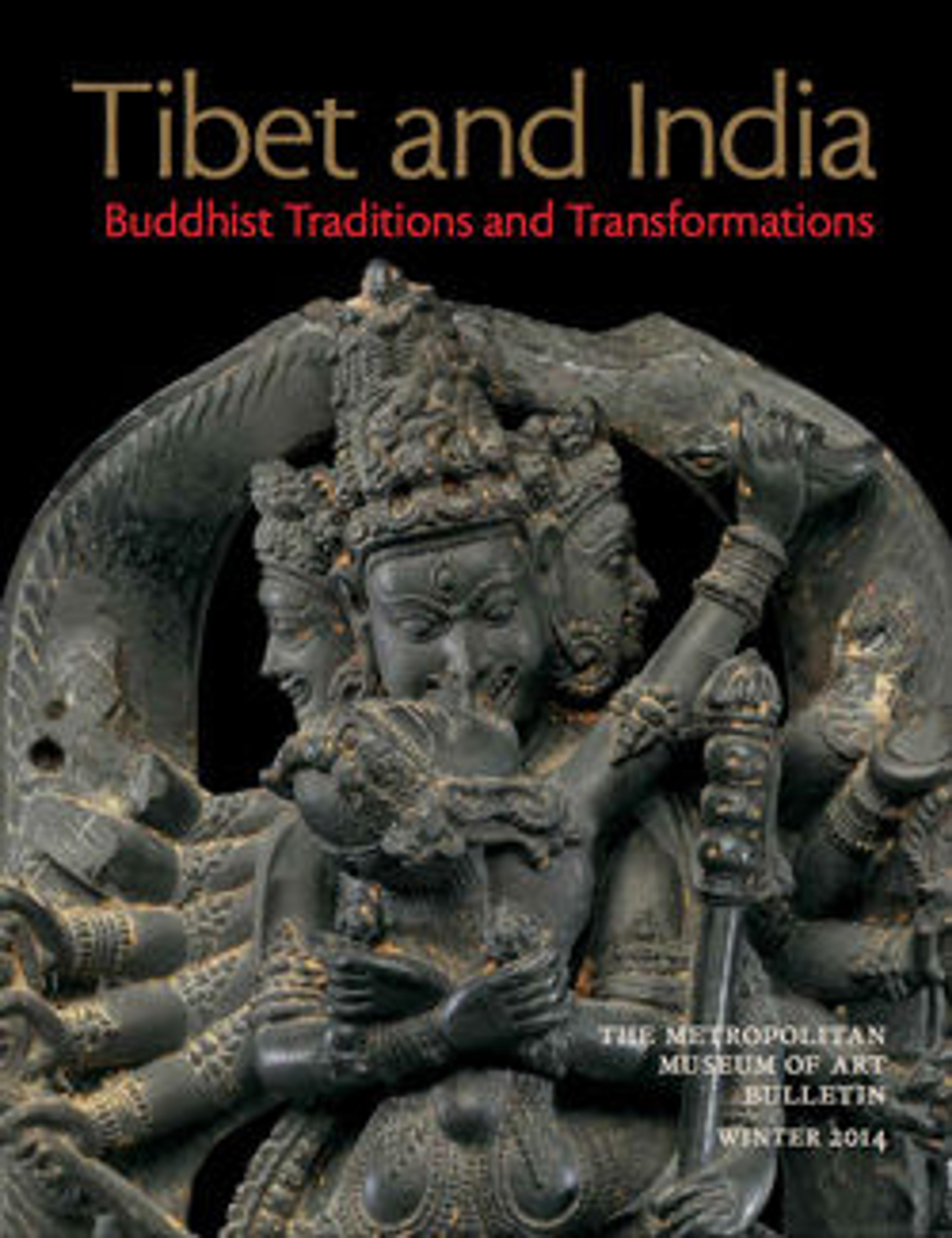Shrine Relief Fragment Depicting Ashtamahabhaya Tara, the Buddhist Savioress
Tara’s title, Ashtamahabhaya, refers to the eight great perils from which she offers sanctuary: lions, snakes, thieves, enslavement, yakshas, shipwreck, fire, and rampaging elephants (the last two are shown at the lower right). Merchants, including mariners, who regularly confronted such dangers, particularly venerated this goddess. The Ashtamahabhaya iconography first appears in conjunction with Avalokiteshvara imagery in rock-cut sanctuaries in western India. The architectural style of the shrine setting is similar to extant temples in Himachal Pradesh, allowing this image to be dated to the tenth or eleventh century.
Artwork Details
- Title: Shrine Relief Fragment Depicting Ashtamahabhaya Tara, the Buddhist Savioress
- Date: 10th–11th century
- Culture: India (Himachal Pradesh)
- Medium: Wood
- Dimensions: H. 17 3/4 in. (45.1 cm); W. 8 5/8 in. (21.9 cm); D. 2 5/8 in. (6.7 cm)
- Classification: Sculpture
- Credit Line: Gift of Evelyn Kossak, The Kronos Collections, 1994
- Object Number: 1994.488
- Curatorial Department: Asian Art
More Artwork
Research Resources
The Met provides unparalleled resources for research and welcomes an international community of students and scholars. The Met's Open Access API is where creators and researchers can connect to the The Met collection. Open Access data and public domain images are available for unrestricted commercial and noncommercial use without permission or fee.
To request images under copyright and other restrictions, please use this Image Request form.
Feedback
We continue to research and examine historical and cultural context for objects in The Met collection. If you have comments or questions about this object record, please complete and submit this form. The Museum looks forward to receiving your comments.
